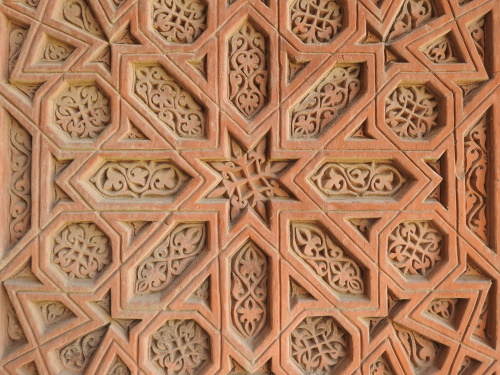Blog TWHS Visits
Kyrgyz Silk Roads: Uzgen
Kyrgyzstan is not as richly endowed with Silk Road remains as its neighboring countries. The nomadic nature of its inhabitants has resulted in few permanent historic structures. But there are still some that are worth visiting. Tash Rabat's caravanserai is said to be the “best”, but it was too far from my itinerary. I already visited Burana (part of the Silk Road WHS) at the beginning of my journey. I ended it in Uzgen, which is part of the separate Silk Roads Sites in Kyrgyzstan TWHS.
The city of Uzgen is one of the oldest in Kyrgyzstan, dating back to the 2nd or 1st century BC when it was founded as a trading post along the Silk Road. It is described in Chinese sources from that time. It also was the capital of the medieval Kharakhanid Empire, at the center of the fertile Fergana Valley.
Its monuments can be found in a historical-archaeological park in present-day Uzgen’s town center. They comprise a 12th-century minaret and three mausolea from the same period. There’s an entrance fee of 20 Som (0.20 EUR) to this neatly arranged park. A strange detail that I noticed walking around the site is that music comes “from the ground”. There are speakers hidden in the grass, producing cheerful notes. These Disneyesque background effects reminded me of China.
The three mausolea are built so close to each other that they look like one structure. Together they nowadays shelter under a protective roof of corrugated iron. This was only recently installed (I’d guess in 2018, comparing older photos available on the internet). Beautiful carvings have been made in the red-baked clay of the buildings. Floral designs and geometric symbols have been used. Also, there are inscriptions in Arabic calligraphy. The facades of the three buildings are almost completely covered by these carvings. The complex has also been very nicely restored, supported by the U.S. Ambassadors Fund for Cultural Preservation.
The mausolea can be entered through the door of the middle one, however, there is little left of any interior decoration.
As more and more local visitors were arriving, the caretaker also unlocked the door of the minaret so we could climb to the top. Fortunately, the stairs here are a lot wider than those in Burana, and there is also a handrail. From the top, you have a view over the city and the excavated archaeological site: in addition to the minaret and the mausolea, the ruins of a building that was probably a Koranic school have also been found.
The minaret of Uzgen is very similar to that of Burana, but – despite the fact that it was also felled by an earthquake – a lantern-shaped top has been added so it looks more "finished".
Uzgen is a very pleasant half-day trip from Osh. In addition to the historical sites, it also has a busy, authentic bazaar. They sell a lot of fruits and peanuts. Among the vegetables are large yellow carrots, which they add to the plov. And there is the famous Uzgen red rice.
On a practical note: although I am a fan of taking marshrutka’s (minibusses) for public transport all around Kyrgyzstan, in this case, it’s easier to take a shared taxi. They shuttle between the Jayma Bazaar in Osh and the one in Uzgen. The regular minibus is only available from Osh's remote bus station.
Els - 10 October 2021


